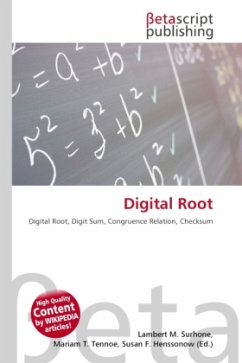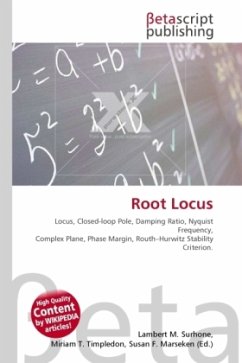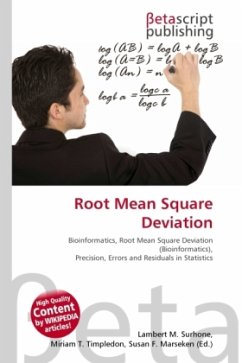High Quality Content by WIKIPEDIA articles! The digital root (also repeated digital sum) of a number is the number obtained by adding all the digits, then adding the digits of that number, and then continuing until a single-digit number is reached. For example, the digital root of 65,536 is 7, because 6 + 5 + 5 + 3 + 6 = 25 and 2 + 5 = 7. Digital roots can be calculated with congruences rather than by adding up all the digits, a procedure that can save time in the case of very large numbers. Digital roots can be used as a sort of checksum. For example, since the digital root of a sum is always equal to the digital root of the sum of the summands' digital roots. A person adding long columns of large numbers will often find it reassuring to apply casting out nines to his or her result knowing that this technique will catch the majority of errors.
Bitte wählen Sie Ihr Anliegen aus.
Rechnungen
Retourenschein anfordern
Bestellstatus
Storno








